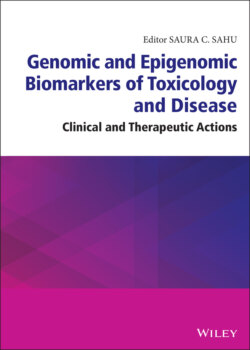Читать книгу Genomic and Epigenomic Biomarkers of Toxicology and Disease - Группа авторов - Страница 68
Methods for Detecting the Expression of miRNAs
ОглавлениеAs a biomarker of human diseases, ideally the detection method of miRNA should not need expensive reagents and instruments and be easy to operate. Such a method should have good specificity for distinguishing miRNAs with similar sequences. At the same time, it should have sufficient sensitivity for quantitative analysis, even for micro clinical samples, and it should be able to detect multiple samples in parallel (de Planell-Saguer and Rodicio 2011; Van Roosbroeck, Pollet, and Calin 2013).
The Gold Standard Conference believes that the method for meeting these requirements and for detecting miRNA in clinical laboratories is quantitative reverse transcription polymerase chain reaction (PCR) (qRT-PCR). miRNA microarray is more expensive than qRT-PCR and is normally used in the discovery stage of biomarkers.
However, these methods all need to extract miRNAs from tumor samples of patients, which include non-tumor matrix and inflammatory cells in addition to malignant tumor cells. If the goal is to detect the specific expression of miRNA in malignant tumor cells, it is recommended to use flow cytometry to sort liquid tumors or laser capture microscopy to cut solid tumors. In situ hybridization technology (Sempere and Korc 2013) can also be used; it can detect target miRNA in different types of cells (malignant tumor cells or microenvironment cells) that constitute tumors. This method provides additional miRNA subcellular localization information. At present, the latest method for detecting miRNA expression is next-generation sequencing. This technique is highly sensitive and specific, can be used for high-throughput analysis, and can discover new miRNAs. Next-generation sequencing produces a large amount of complex data, which need to be analyzed by a trained bioinformatician; besides, the cost of single RNA sequencing is too high, so this method is not suitable for diagnosis but can still be considered as a screening method for miRNAs of interest (Berindan-Neagoe et al. 2014).
